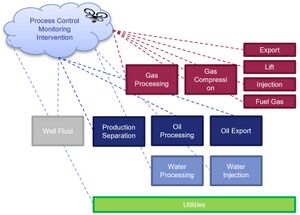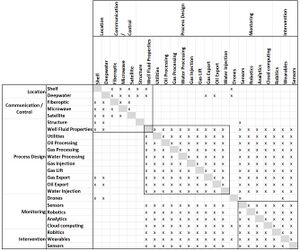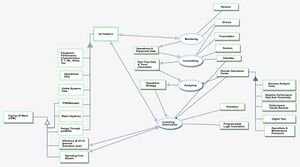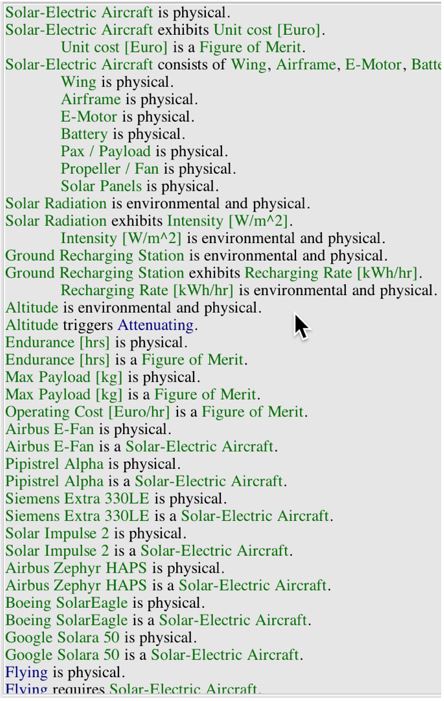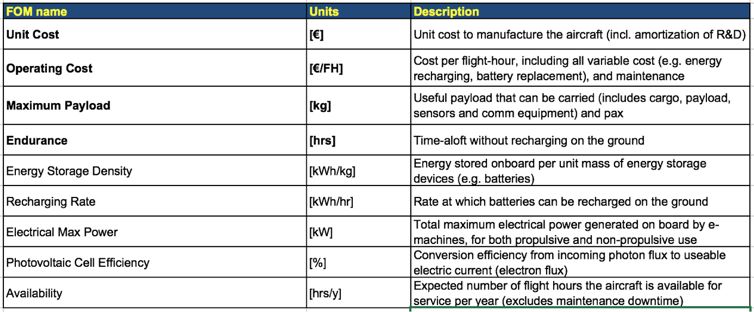Remote Operated Processing Platform
Technology Roadmap Sections and Deliverables
Info on Remote Oil and Gas Processing Platform
Roadmap Overview
The working principle and architecture of a remote operated oil and gas processing platform is depicted in the below.
details
Design Structure Matrix (DSM) Allocation
We can extract from the DSM above that the remote operated processing platform is composed of and dependent on a series of decisions and technologies. These decisions and subsequent technologies include facility location, communication and control method, process design, monitoring and intervention.
Roadmap Model using OPM
We provide an Object-Process-Diagram (OPD) of the in the figure below. This diagram captures the main object of the roadmap (Solar-Electric Aircraft), its various instances including main competitors, its decomposition into subsystems (wing, battery, e-motor …), its characterization by Figures of Merit (FOMs) as well as the main processes (Flying, Recharging).
An Object-Process-Language (OPL) description of the roadmap scope is auto-generated via Opcloud and provided below. This is simply an export of the OPD in a formal natural language.
Figures of Merit
The table below show a list of FOMs by which solar electric aircraft can be assessed. The first four (shown in bold) are used to assess the aircraft itself. They are very similar to the FOMs that are used to compare traditional aircraft which are propelled by fossil fuels, the big difference being that 2SEA is essentially emissions free during flight operations. The other rows represent subordinated FOMs which impact the performance and cost of solar electric aircraft but are provided as outputs (primary FOMs) from lower level roadmaps at level 3 or level 4, see the DSM above.
Besides defining what the FOMs are, this section of the roadmap should also contain the FOM trends over time dFOM/dt as well as some of the key governing equations that underpin the technology. These governing equations can be derived from physics (or chemistry, biology ..) or they can be empirically derived from a multivariate regression model. The table below shows an example of a key governing equation governing (solar-) electric aircraft.
